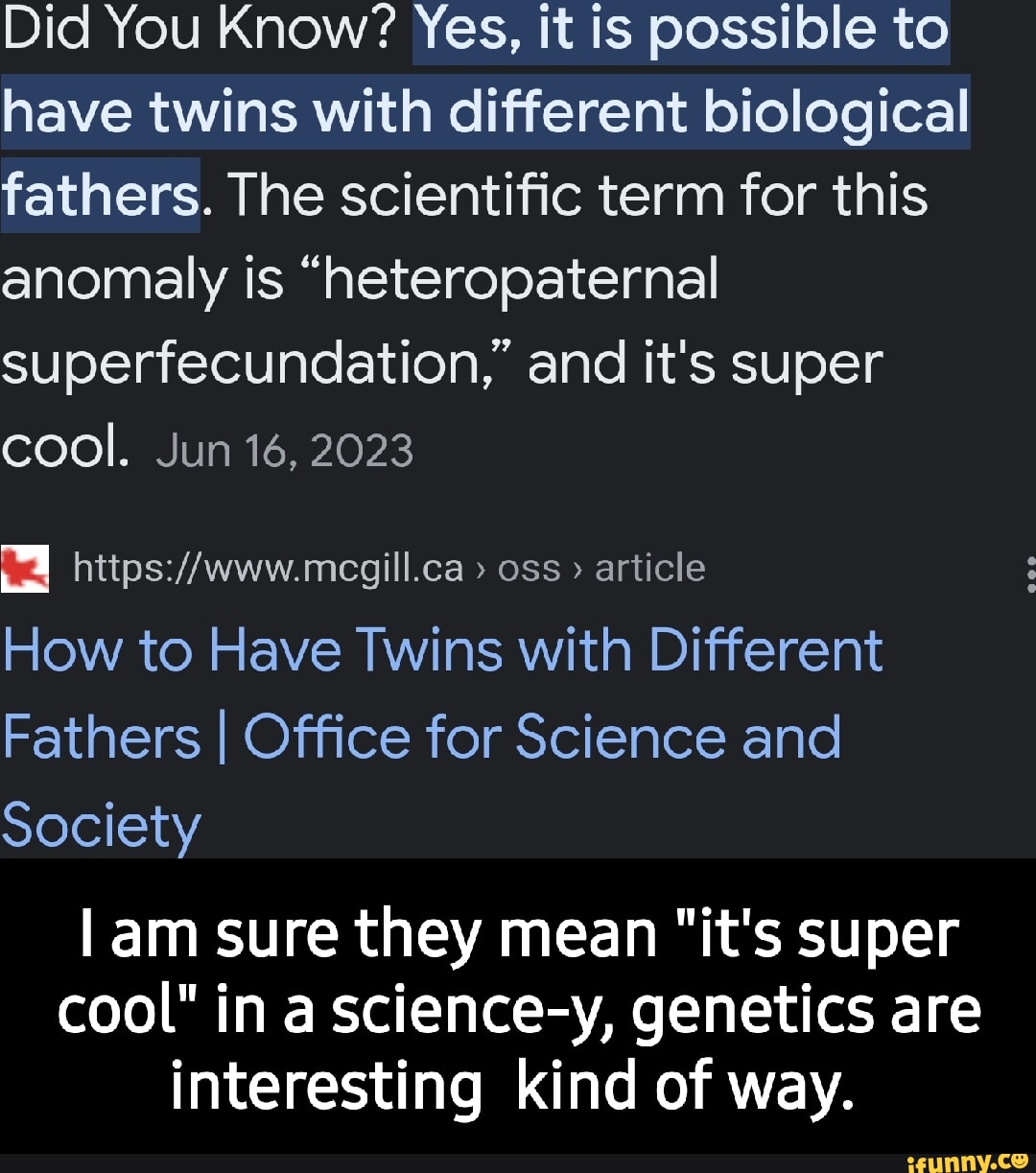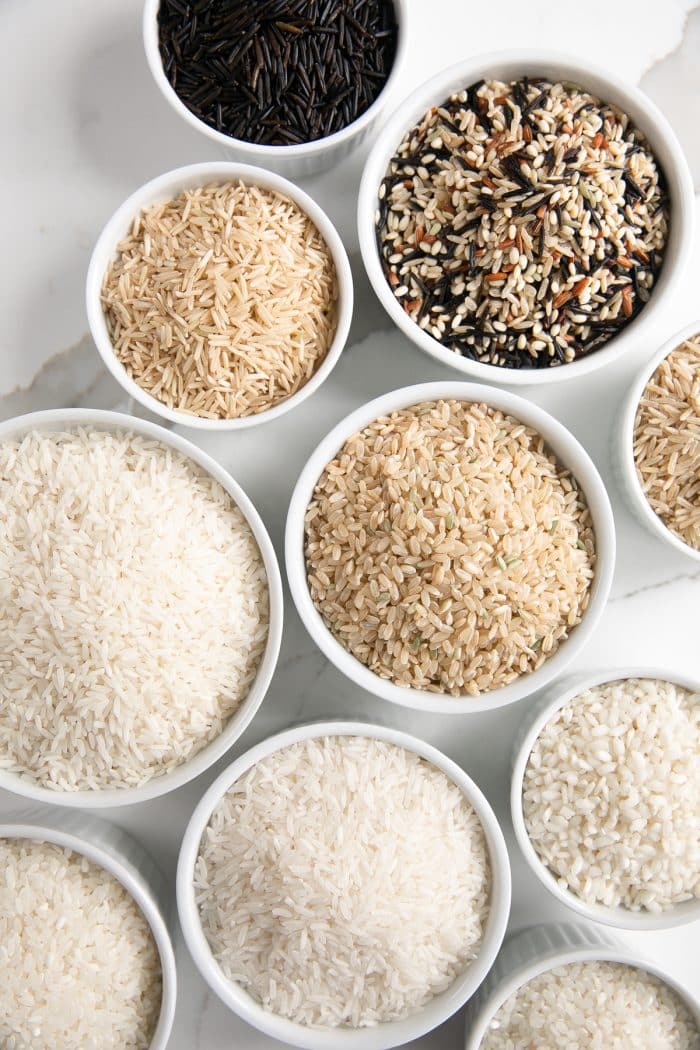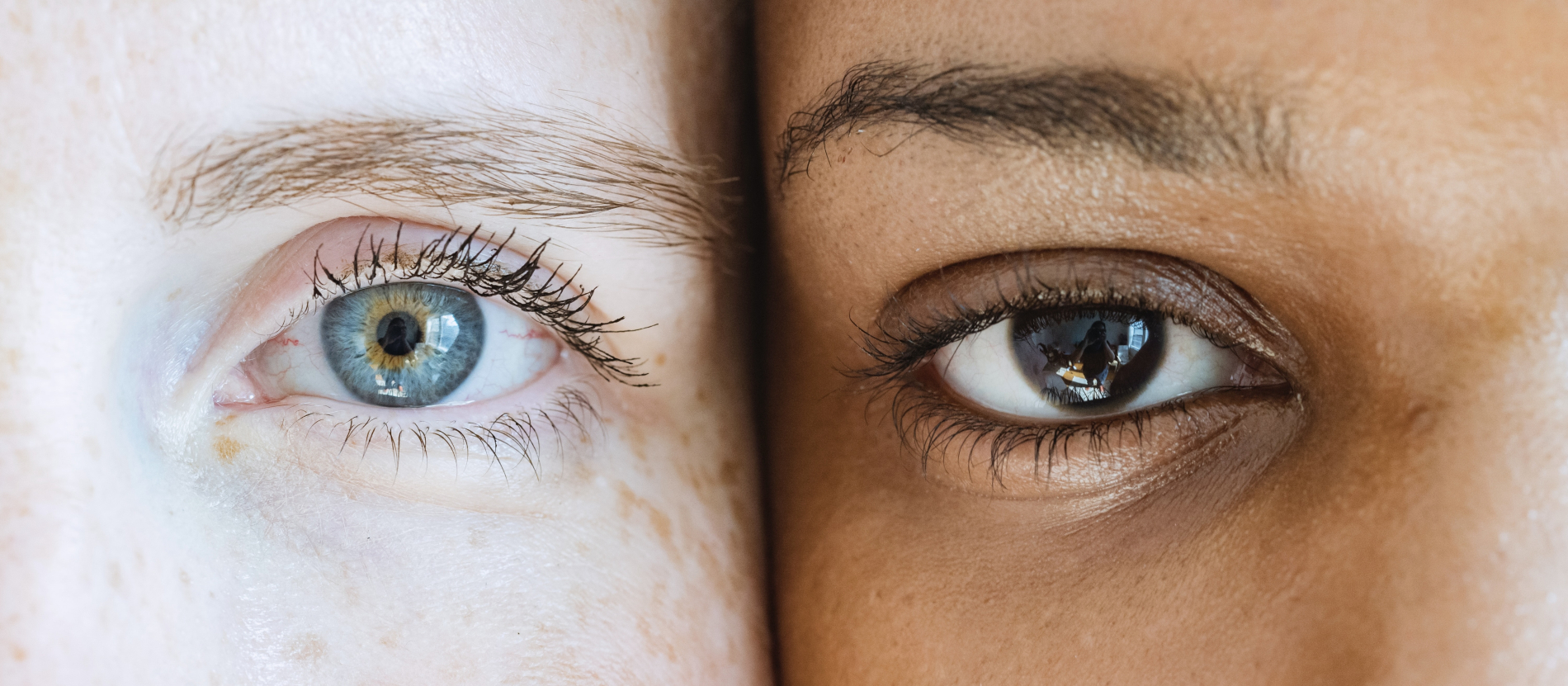How to Have Twins with Different Fathers
4.5 (139) · $ 5.99 · In stock
Yes, it is possible to have twins with different biological fathers. The scientific term for this anomaly is “heteropaternal superfecundation,” and it’s super cool. “Heteropaternal” signifies different fathers and “superfecundation” means the fertilization of two ova during the same menstrual cycle by separate mating actions. In other words, it is a phenomenon where a second egg is released, and two acts of sexual intercourse can lead to the fertilization of these eggs by two different sources of sperm. The short story is they’re just fraternal twins with an extra twist. The key ingredient is hyperovulation – which is a fancy way of saying two (or more) eggs are released by the ovaries in the same month, as opposed to the usual one egg. At the beginning of a cycle, the ovaries build up structures called follicles. Typically, at around day 8 of the cycle, all but one of these follicles degenerate. The last one standing develops the ovum (egg), and will then rupture near day 14, ejecting the egg – that’s called ovulation. This process is regulated by hormones, particularly follicle-stimulating hormone (FSH). High FSH levels are thought to be responsible for multiple ovulation, causing more than one follicle to become dominant, or multiple instances of follicle development to occur in the same period. This means the two eggs can get ejected by the same ovary, or one egg can get ejected from each. You can think of the ovaries like a busy restaurant kitchen, receiving a high number of orders. With all that overwhelming input, you may have an accidental duplicate order, which is harmless, it just means someone’s belly might get a little extra full. That’s how you get fraternal twins – two eggs, two sperm, two babies. Note that identical twins arise from one egg splitting into two after fertilization. Identical twins share 100% of their genes, classic fraternals share around 50%, and fraternal twins from different fathers have an average of 25% of the same genes (just like half siblings). The capacity to have fraternal twins, hence, to double ovulate, is believed to be a complex trait, influenced by environment and genetics. That’s why twins are observed to run in families. But research on candidate genes is still premature. Age is also a factor – higher FSH is more likely in younger menstruators and those approaching menopause. It’s also important to note that two sperm can’t fertilize the same egg. Double fertilization means there would be too much DNA in the cell, hence it wouldn’t be viable. There is also the case of “superfetation,” when someone with child becomes pregnant again during separate cycles. But this is also very unlikely in humans because the pregnant body creates an environment that suppresses ovulation. While few proposed cases have been reported, the topic remains controversial due to the difficulty in collecting evidence. The occurrence of heteropaternal superfecundation is extremely rare, though difficult to estimate because it is only discovered if paternity is contested. To reiterate, it relies on many events. When multiple ovulation occurs, it then requires the fertilization of both ova, from different sources of sperm. For many, it’s already difficult enough to conceive one child, let alone twice in one cycle. Couples trying to have children have an approximate conception rate of 30% in the first month, though this varies according to many factors. Ultrasound scans are able to detect multiple ovulation, though its incidence can generally be estimated by the frequency of fraternal twin births. In 2021, around 3% of total live births in Canada were multiple births, of which the vast majority were twins; fraternal twins make up 70% of twin births. The frequency of twin births has also increased overtime with the rise of infertility treatments. That said, in 2020, only 19 cases of heteropaternal superfecundation were reported worldwide. This phenomenon is more common in animals like cows that ovulate more often and aren’t as monogamous as most humans. Who knew bovine biology could be so bountiful? @HalehCohn Haleh Cohn is studying Anatomy and Cell Biology at McGill University with a minor in Economics.

Mom has twins with different dads after sex with 2 men in 1 day

Did 2 Different Men Father My Twins?

Having Surrogacy Twins Babies With Different Fathers
:max_bytes(150000):strip_icc()/141479729-56a2dcdf3df78cf7727abd7b.jpg)
Is It Possible for Twins to Have Different Fathers?

We Are All Mutants and So Is the Coronavirus Office for Science and Society - McGill University
Twins With Two Different Fathers

CAN TWINS HAVE DIFFERENT FATHERS?

Twins with different fathers: Is it possible or common?

Hereditary Fructose Intolerance Office for Science and Society - McGill University

Did You Know? Yes, it is possible to have twins with different biological fathers. The scientific

Articles by Haleh Cohn Office for Science and Society - McGill University

Our Articles Office for Science and Society - McGill University

Woman has twins by two fathers after having sex with on same day

This English same-sex couple fathered twins who are half-siblings — and a Canadian surrogate helped them

Cracked Science 24: The New World of Epigenetics Office for Science and Society - McGill University












